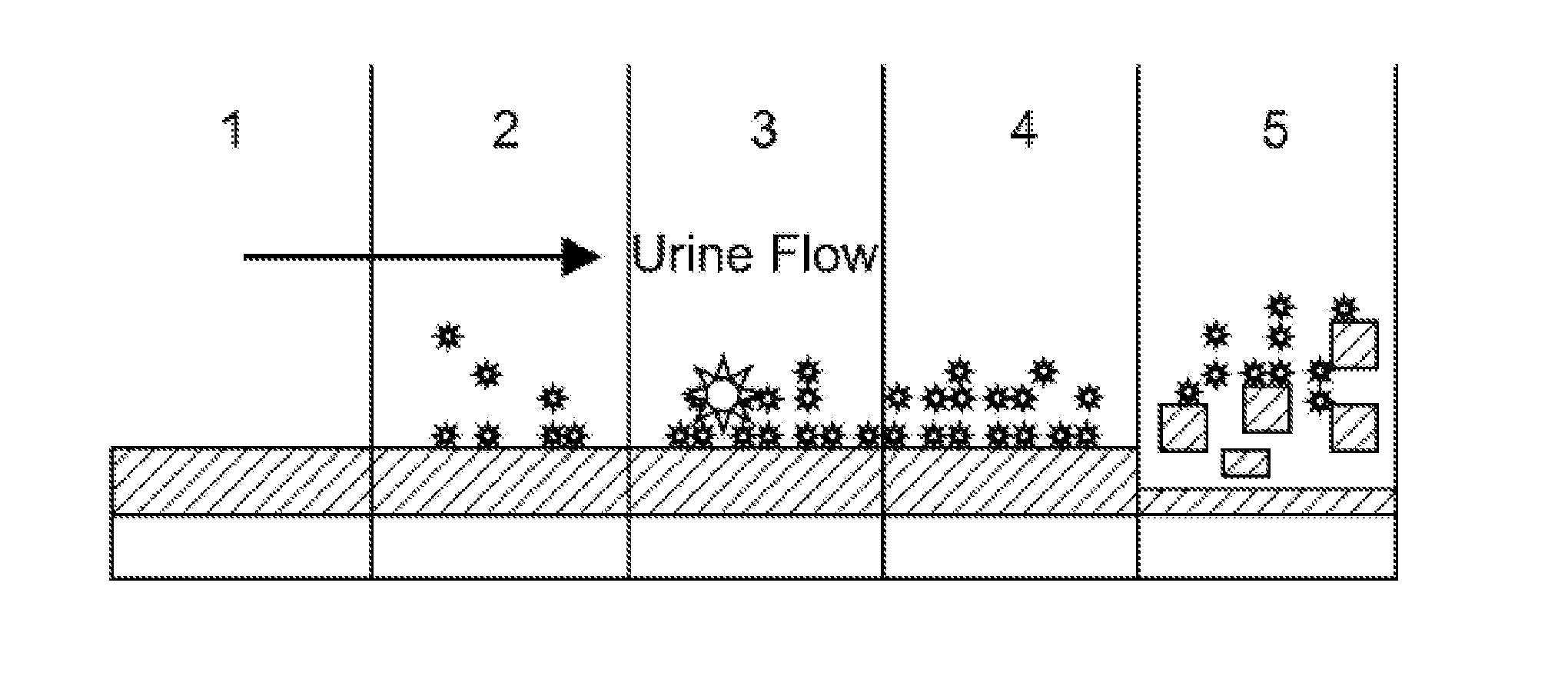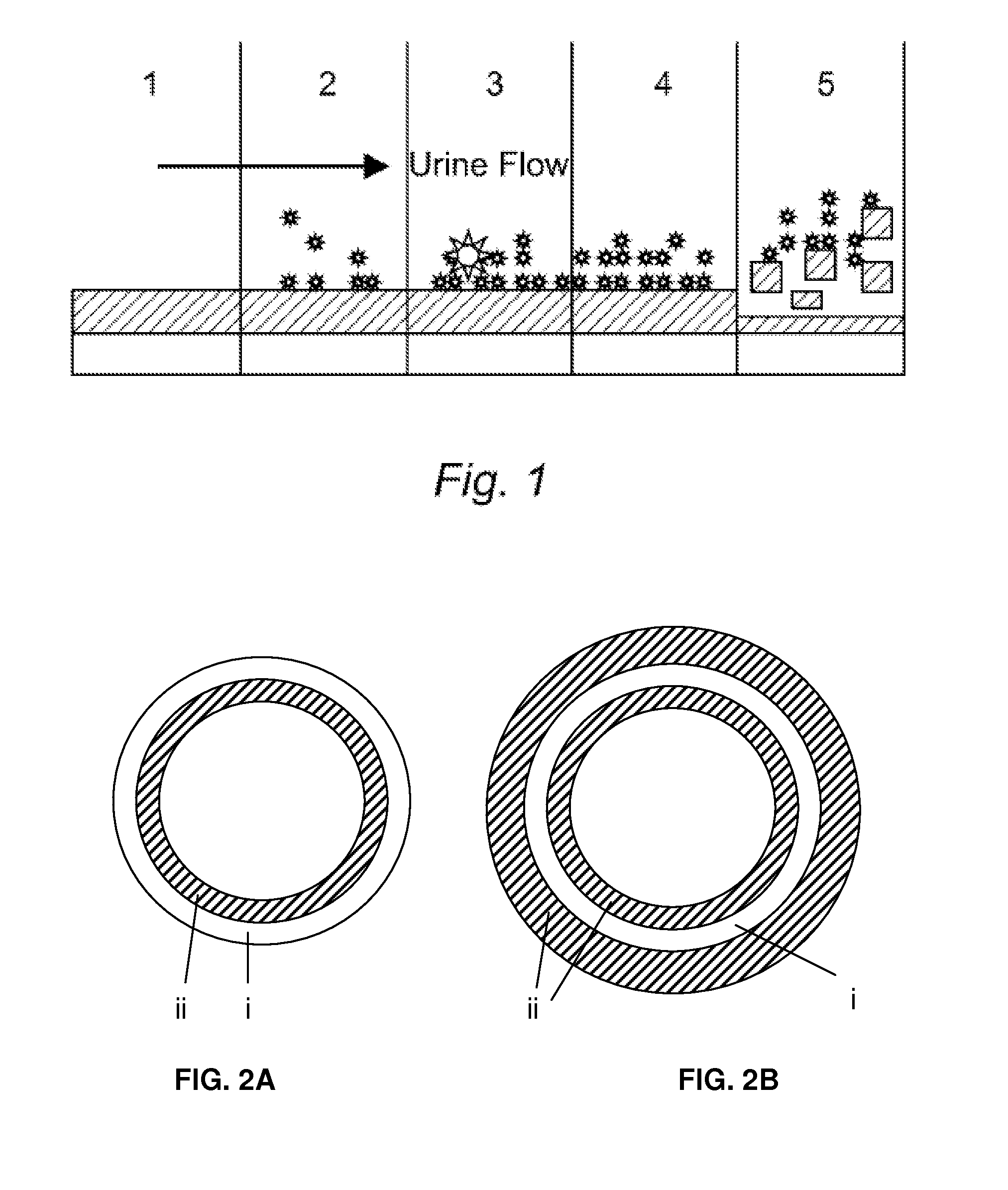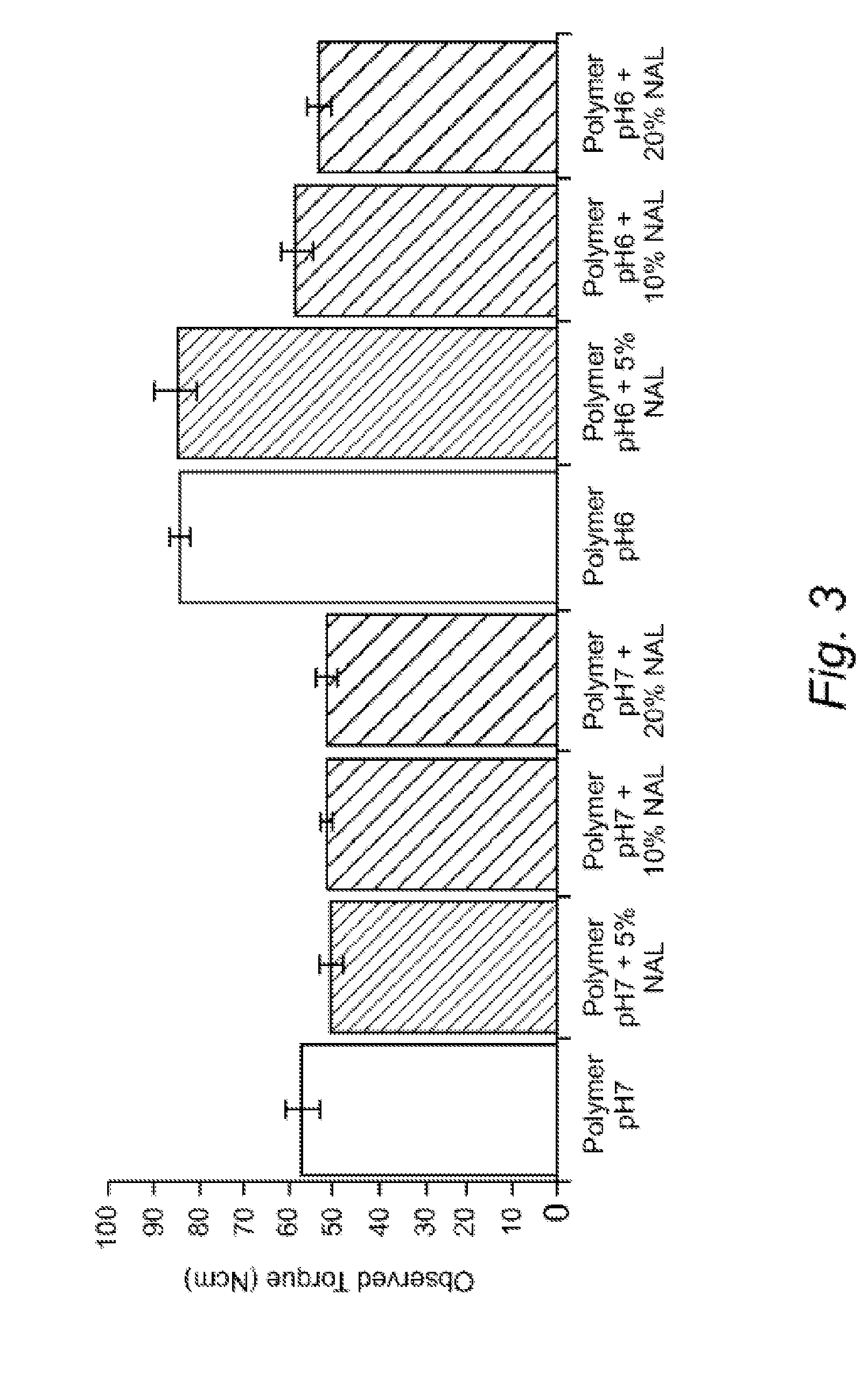Multi-layered Device
a multi-layered device and multi-layer technology, applied in the field of medical devices, can solve the problems of increasing the time patients remain in hospital, increasing the number of patient deaths associated with the use of these devices, and precipitating minerals in urine to lead to encrustation
- Summary
- Abstract
- Description
- Claims
- Application Information
AI Technical Summary
Benefits of technology
Problems solved by technology
Method used
Image
Examples
example 1
[0200]As illustrated by FIG. 3, the torque on the screw can be measured which provides a good indication of the viscosity and fluidity of the material within the extruder and gives an approximation of how different additives and functional excipients and / or active agents will affect both the ease of production of the material. This also has some bearing on the final mechanical properties of the material. This graph shows a polymer that dissolves at pH 7 with a 5, 10 and 20% loading of the quinolone antibiotic Nalidixic Acid. There was little effect on the torque with increasing nalidixic acid content. However, one of the other agents, levofloxacin, showed an increase in the observed torque, showing that it made processing more difficult.
[0201]When increasing levels of nalidixic acid were added to a pH 6 dissolving polymer, there was a decrease in the torque observed on the screw, indicating that with this polymer, the drug was aiding the processing.
example 2
[0202]Mechanical properties of formulations can be examined using DMTA: or Dynamic Mechanical Thermal Analysis in tension mode. This involves heating the product along a temperature gradient whilst constantly oscillating it around a set point. From this data, it is possible to determine the glass transition temperature which is the temperature below which the material exists as a glassy state and above which it exists in a more flexible, rubbery state. This provides an understanding of relaxation properties of the polymer, which will have implications on the flexibility of the final product.
[0203]FIG. 4 illustrates values which reflect those observed during processing, with Nalidixic acid causing a decrease in the glass transition temperature with the pH 6 polymer. As before, the agent which had increased the torque during processing also increased the glass transition temperature.
[0204]Using strips of extruded formulations and examining them using DMTA in tension mode and complimen...
example 3
[0205]An embodiment of a particular formulation of the invention which could be used to form a particular layer of a device of the present invention was tested to determine drug elution characteristics at pH 6.2. Using the formulation, a layer could be provided which constantly elutes a drug at a low level when the device is in place, but, as a failsafe device, would have the ability to switch to a more rapid response when infection is detected that is, when the pH rises. Typically, pH 6.2 is the pH of healthy, uninfected urine, whilst pH 7.8 is the pH of infected urine. As illustrated in FIG. 5, drug release studies of 10% Nalidixic Acid were performed using dissolution apparatus with PBS solution at pH 6.2, to represent healthy urine, and pH 7.8 to represent infected urine.
[0206]Formulations used in this testing included a first formulation comprising Eudragit® S 100 and 10% PEG 8000 and a second formulation comprising Eudragit® L100 and 20 glycerol and 20% PEG 8000.
PUM
 Login to View More
Login to View More Abstract
Description
Claims
Application Information
 Login to View More
Login to View More - R&D
- Intellectual Property
- Life Sciences
- Materials
- Tech Scout
- Unparalleled Data Quality
- Higher Quality Content
- 60% Fewer Hallucinations
Browse by: Latest US Patents, China's latest patents, Technical Efficacy Thesaurus, Application Domain, Technology Topic, Popular Technical Reports.
© 2025 PatSnap. All rights reserved.Legal|Privacy policy|Modern Slavery Act Transparency Statement|Sitemap|About US| Contact US: help@patsnap.com



